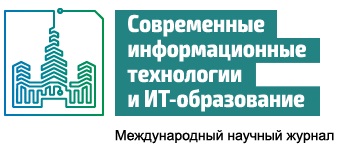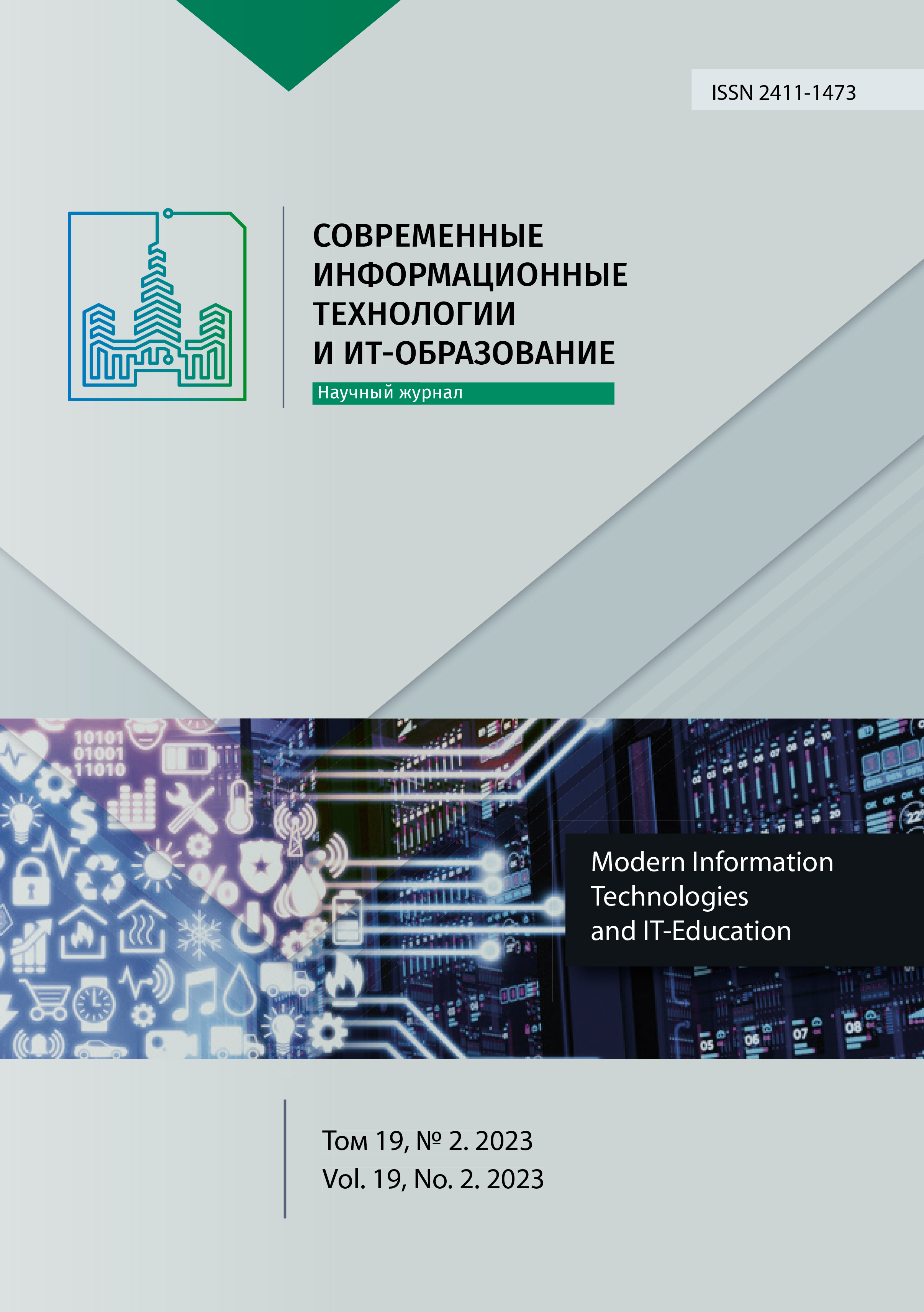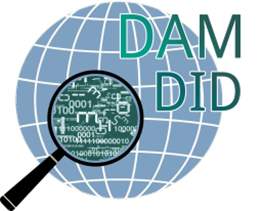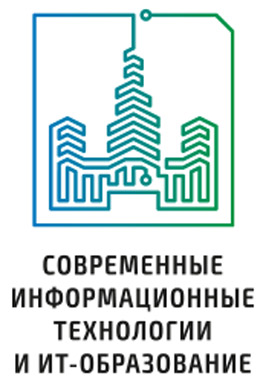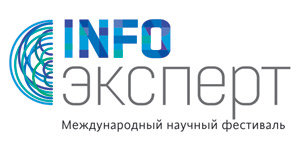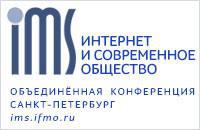Эволюционный подход к формированию архитектуры PINN для приближенного решения уравнения Лапласа в двух постановках
с разрывным краевым условием и данными измерений внутри квадратной области
Аннотация
Физически информированные нейронные сети (PINNs) сегодня широко применяются для решения дифференциальных задач и моделирования физических процессов, описываемых дифференциальными уравнениями. В работе исследуется вопрос подбора архитектуры PINN с помощью эволюционных алгоритмов. Задача выбора подходящих значений гиперпараметров ставится давно и до сих пор не имеет единого подхода. В статье предлагаетмя генетический алгоритм наращивания размера скрытого слоя нейронной сети для приближенного решения уравнения Лапласа в квадратной области в двух постановках. Рассмотрены различные вариации эволюционной схемы. Обсуждаются преимущества и недостатки параметров этих вариаций. Результаты сравниваются в том числе с полученными ранее. Введена оригинальная процедура мутации, основанная на построении фронта Парето для различных значений гиперпараметра в функции потерь.
Литература
2. Tarkhov D., Vasilyev A. New neural network technique to the numerical solution of mathematical physics problems. I: Simple problems. Optical Memory and Neural Networks (Information Optics). 2005;(14):59-72.
3. Tarkhov D., Vasilyev A. New neural network technique to the numerical solution of mathematical physics problems. II: Complicated and nonstandard problems. Optical Memory and Neural Networks (Information Optics). 2005;(14):97-122.
4. Ye J., Do N.C., Zeng W., Lambert M. Physics-informed neural networks for hydraulic transient analysis in pipeline systems. Water Research. 2022;221:118828. https://doi.org/10.1016/j.watres.2022.118828
5. Bragone F., Morozovska K., Hilber P., Laneryd T., Luvisotto M. Physics-informed neural networks for modelling power transformer s dynamic thermal behaviour. Electric Power Systems Research. 2022;211:108447. https://doi.org/10.1016/j.epsr.2022.108447
6. Huang Y. Zhang Z. Zhang X. A Direct-Forcing Immersed Boundary Method for Incompressible Flows Based on Physics-Informed Neural Network. Fluids. 2022;(7):56. https://doi.org/10.3390/ fluids7020056
7. Wang Y., Han X., Chang C.-Yu., Zha D., Braga-Neto U., Hu X. Auto-PINN: Understanding and Optimizing Physics-Informed Neural Architecture. In: NeurIPS 2023 AI for Science Workshop. New Orleans, United States; 2023. 18 p. Available at: https://openreview.net/forum?id=xJFITn0hRx (accessed 24.01.2023).
8. Hornik K. Approximation capabilities of multilayer feedforward networks. Neural Networks. 1991;4(2):251-257. https://doi.org/10.1016/0893-6080(91)90009-T
9. Lazovskaya T., Tarkhov D., Dudnik A., Koksharova E., Mochalova O., Muranov D., Pozhvanyuk K., Sysoeva A. Investigation of Pareto Front of Neural Network Approximation of Solution of Laplace Equation in Two Statements: with Discontinuous Initial Conditions or with Measurement Data. In: Kryzhanovsky B., Dunin-Barkowski W., Redko V., Tiumentsev Y. (eds.) Advances in Neural Computation, Machine Learning, and Cognitive Research VI. NEUROINFORMATICS 2022. Studies in Computational Intelligence. Vol. 1064. Cham: Springer; 2023. p. 406-414. https://doi.org/10.1007/978-3-031-19032-2_42
10. Lazovskaya T., Malykhina G., Tarkhov D. Physics-Based Neural Network Methods for Solving Parameterized Singular Perturbation Problem. Computation. 2021;9(9):97. https://doi.org/10.3390/computation9090097
11. Abualigah L., Diabat A. A novel hybrid antlion optimization algorithm for multi-objective task scheduling problems in cloud computing environments. Cluster Computing. 2021;24(1):205-223. https://doi.org/10.1007/s10586-020-03075-5
12. Xiang Z., Peng W., Liu X., Yao W. Self-adaptive loss balanced Physics-informed neural networks, Neurocomputing. 2022;496:11-34. https://doi.org/10.1016/j.neucom.2022.05.015
13. Chen Z., Zhan Z., Lin Y., Gong Y., Gu T., Zhao F., Yuan H., Chen X., Li Q., Zhang J., Multiobjective Cloud Workflow Scheduling: A Multiple Populations Ant Colony System Approach. IEEE Transactions on Cybernetics. 2019;8(49);2912-2926. https://doi.org/10.1109/TCYB.2018.2832640
14. Riedmiller M., Braun H. A direct adaptive method for faster backpropagation learning: the RPROP algorithm. In: IEEE International Conference on Neural Networks. San Francisco, CA, USA: IEEE Computer Society; 1993. Vol. 1. p. 586-591. https://doi.org/10.1109/ICNN.1993.298623
15. Tarkhov D., Vasilyev A. Semi-empirical Neural Network Modeling and Digital Twins Development. Academic Press. Elsevier Publ.; 2020. 288 p. https://doi.org/10.1016/C2017-0-02027-X
16. Kuznetsov E.B., Leonov S.S., Tarkhov D.A., Vasilyev A.N. Multilayer method for solving a problem of metals rupture under creep conditions. Thermal Science. 2019;23(S2):S575-S582. https://doi.org/10.2298/TSCI19S2575K
17. Budkina E.M., Kuznetsov E.B., Tarkhov D.A., Gomzina A.A., Maltsev S.D. Comparison of solving a stiff equation on a sphere by the multi-lay-er method and method of continuing at the best parameter. Modern Information Technologies and IT-Education. 2018;14(3):533-541. (In Russ., abstract in Eng.) https://doi.org/10.25559/SITITO.14.201803.533-541
18. Kuznetsov E.B., Leonov S.S., Tarkhov D.A., Tsapko E.D., Babintseva A.A. Numerical methods for solving problems with contrast structures. Modern Information Technologies and IT-Education. 2018;14(3):542-555. (In Russ., abstract in Eng.) https://doi.org/10.25559/SITITO.14.201803.542-551
19. Kartavchenko A.E., Tarkhov D.A. Comparison of methods of construction ofapproximate analytical solutions of differential equations considering on the example of elementary functions. Modern Information Technologies and IT-Education. 2017;13(3):16-23. (In Russ., abstract in Eng.) https://doi.org/10.25559/SITITO.2017.3.440
20. Vasiliev A.N., Tarkhov D.A., Bolgov I.P., Kaverzneva T.T., Kolesova S.A., Lozovskaya T.V., Lukinsky E.V., Petrov A.A., Filkin V.M. Multilayer neural network models based on experimental data for processes of sample deformation and destruction. Modern Information Technologies and IT-Education. 2016;12(1):6-14. (In Russ., abstract in Eng.) EDN: XEQQUP
21. Tarkhov D.A., Shershneva E.A. Approximate analytical solutions of Mathieu s equations based on classical numerical methods. Modern Information Technologies and IT-Education. 2016;12(3-1):202-208. (In Russ., abstract in Eng.) EDN: XBWGWF
22. Vasiliev A.N., Lozhkin V.N., Lozhkina O.V., Tarkhov D.A., Timofeev V.D. Neural network approach in information process for predicting highway area air pollution by peat fire. Modern Information Technologies and IT-Education. 2016;12(3-2):181-187. (In Russ., abstract in Eng.) EDN: XIHNRV
23. Vasiliev A.N., Tarkhov D.A., Shemyakina T.A. Approximate analytical solutions of ordinary differential equations. Modern Information Technologies and IT-Education. 2016;12(3-2):188-195.[ 2] (In Russ., abstract in Eng.) EDN: XIHNSF
24. Kaverzneva T.T., Malykhina G.F., Tarkhov D.A. From Differential Equations to Multilayer Neural Network Models. In: Lu H., Tang H., Wang Z. (eds.) Advances in Neural Networks ISNN 2019. ISNN 2019. Lecture Notes in Computer Science. Vol. 11554. Cham: Springer; 2019. p. 19-27. https://doi.org/10.1007/978-3-030-22796-8_3
25. Zulkarnay I.U., Kaverzneva T.T., Tarkhov D.A., Tereshin V.A., Vinokhodov T.V., Kapitsin D.R. A two-layer semi-empirical model of nonlinear bending of the cantilevered beam. Journal of Physics: Conference Series Measurement Science Challenges in Natural and Social Sciences. 2017;1044:012005. https://doi.org/10.1088/1742-6596/1044/1/012005
26. Vasilyev A.N., Tarkhov D.A., Tereshin V.A., Berminova M.S., Galyautdinova A.R. Semi-empirical Neural Network Model of Real Thread Sagging. In: Kryzhanovsky B., Dunin-Barkowski W., Redko V. (eds.) Advances in Neural Computation, Machine Learning, and Cognitive Research. NEUROINFORMATICS 2017. Studies in Computational Intelligence. Vol. 736. Cham: Springer; 2018. p. 138-144. https://doi.org/10.1007/978-3-319-66604-4_21
27. Lazovskaya T., Tarkhov D., Vasilyev A. Multi-Layer Solution of Heat Equation. In: Kryzhanovsky B., Dunin-Barkowski W., Redko V. (eds.) Advances in Neural Computation, Machine Learning, and Cognitive Research. NEUROINFORMATICS 2017. Studies in Computational Intelligence. Vol. 736. Cham: Springer; 2018. p. 17-22. https://doi.org/10.1007/978-3-319-66604-4_3
28. Tarkhov D.A., Bortkovskaya M.R., Kaverzneva T.T., Kapitsin D.R., Shishkina I.A., Semenova D.A., Udalov P.P., Zulkarnay I.U. Semiempirical Model of the Real Membrane Bending. In: Kryzhanovsky B., Dunin-Barkowski W., Redko V., Tiumentsev Y. (eds.) Advances in Neural Computation, Machine Learning, and Cognitive Research II. NEUROINFORMATICS 2018. Studies in Computational Intelligence. Vol. 799. Cham: Springer; 2019. p. 221-226. https://doi.org/10.1007/978-3-030-01328-8_26

Это произведение доступно по лицензии Creative Commons «Attribution» («Атрибуция») 4.0 Всемирная.
Редакционная политика журнала основывается на традиционных этических принципах российской научной периодики и строится с учетом этических норм работы редакторов и издателей, закрепленных в Кодексе поведения и руководящих принципах наилучшей практики для редактора журнала (Code of Conduct and Best Practice Guidelines for Journal Editors) и Кодексе поведения для издателя журнала (Code of Conduct for Journal Publishers), разработанных Комитетом по публикационной этике - Committee on Publication Ethics (COPE). В процессе издательской деятельности редколлегия журнала руководствуется международными правилами охраны авторского права, нормами действующего законодательства РФ, международными издательскими стандартами и обязательной ссылке на первоисточник.
Журнал позволяет авторам сохранять авторское право без ограничений. Журнал позволяет авторам сохранить права на публикацию без ограничений.
Издательская политика в области авторского права и архивирования определяются «зеленым цветом» в базе данных SHERPA/RoMEO.
Все статьи распространяются на условиях лицензии Creative Commons «Attribution» («Атрибуция») 4.0 Всемирная, которая позволяет другим использовать, распространять, дополнять эту работу с обязательной ссылкой на оригинальную работу и публикацию в этом журналe.
